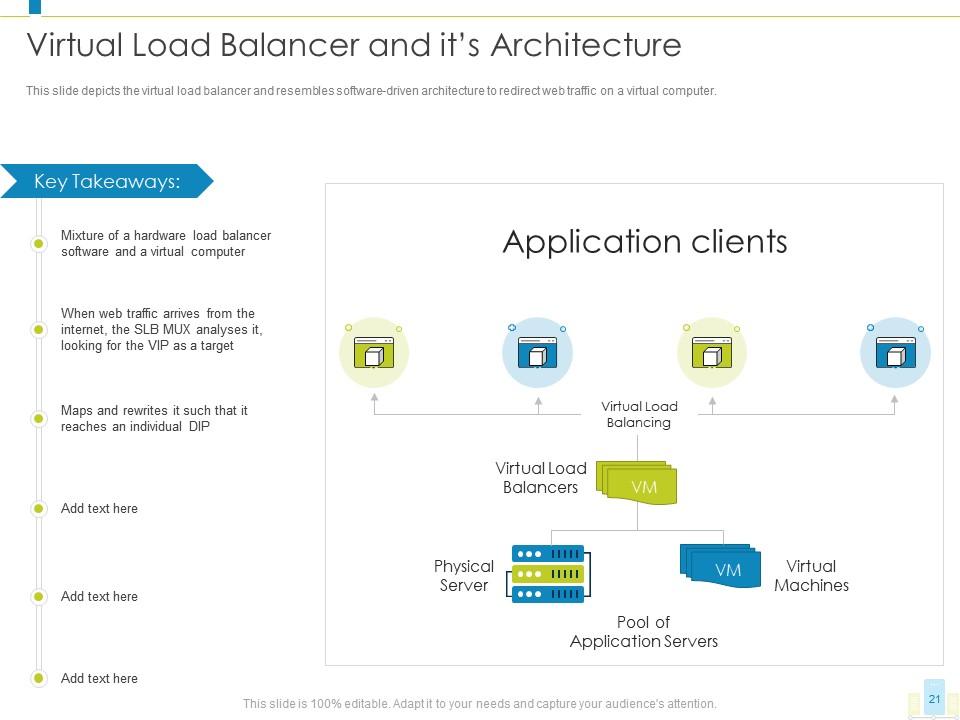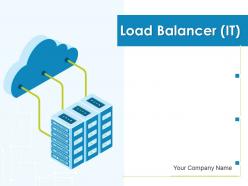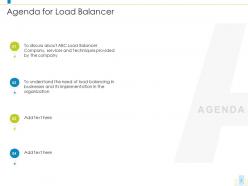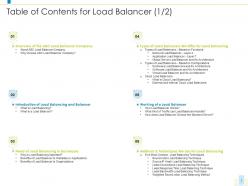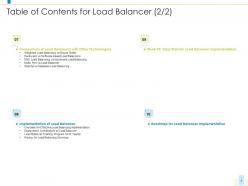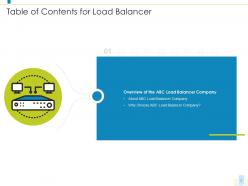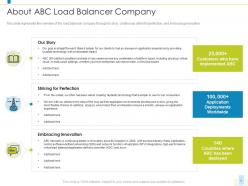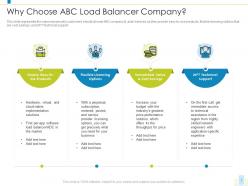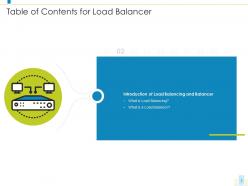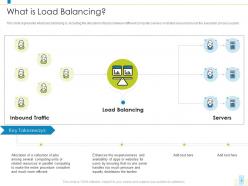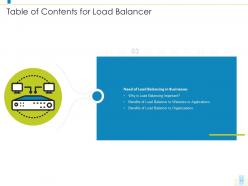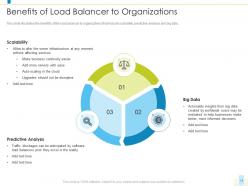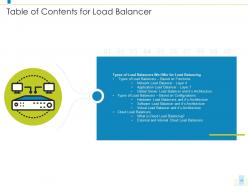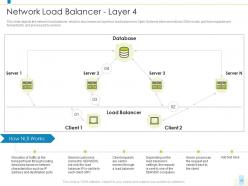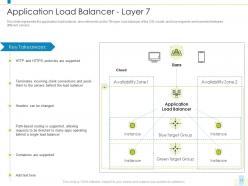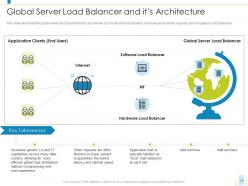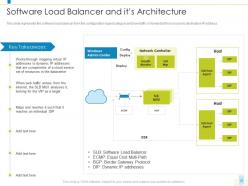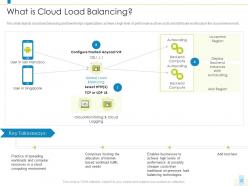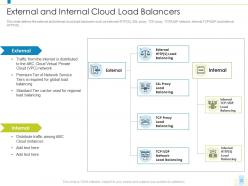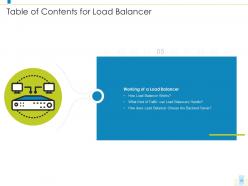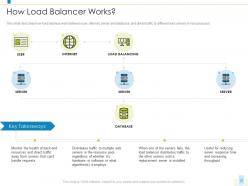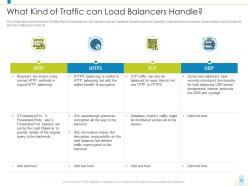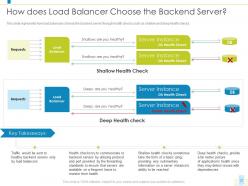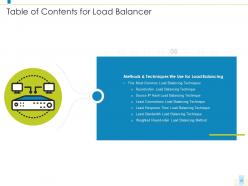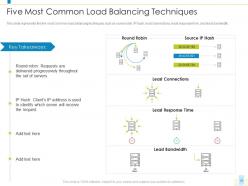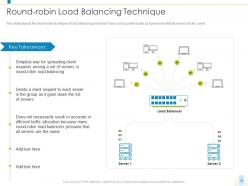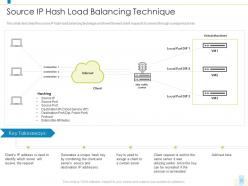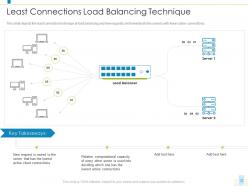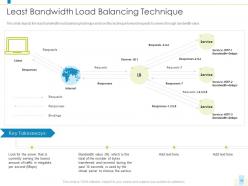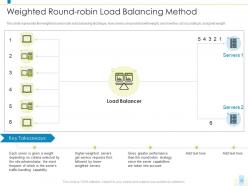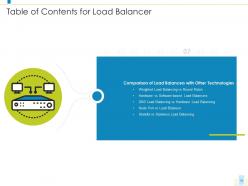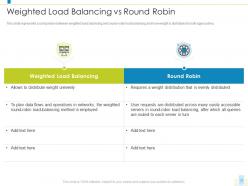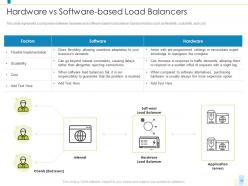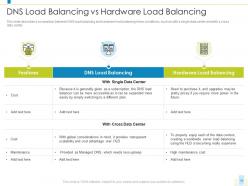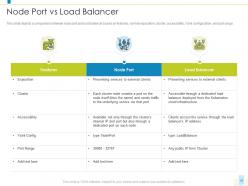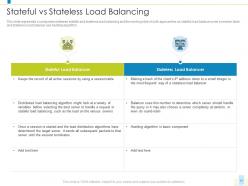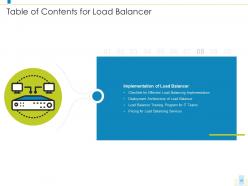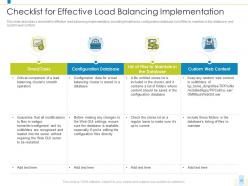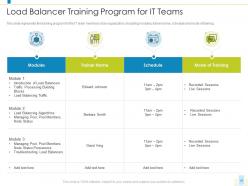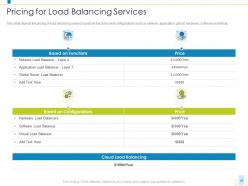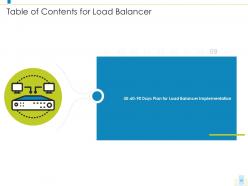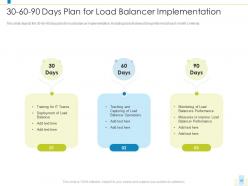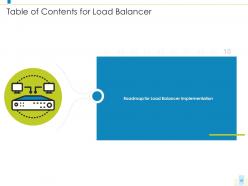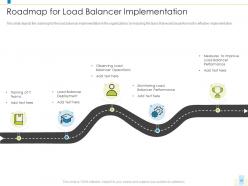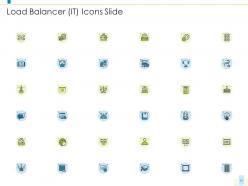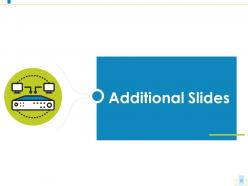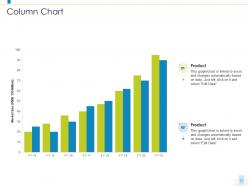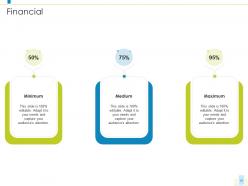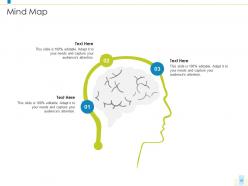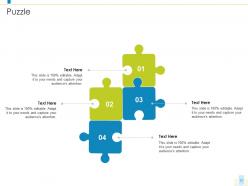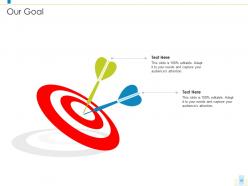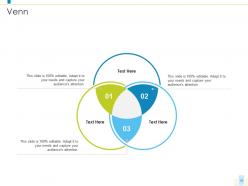Load balancer it powerpoint presentation slides
A load balancer is a device or virtual hardware that distributes network and application traffic across many servers by acting as a reverse proxy. A load balancer is used to increase concurrent user capacity and overall application dependability. A load balancer can arm by spreading the workload over several servers and reducing the total strain on each server. This PowerPoint presentation gives a brief idea about a load balancer company, services, techniques provided for load balancing, and business needs. In this Load Balancer PowerPoint Presentation, we have covered the introduction of load balancing and load balancer, its benefits to the business, and its various types based on functions and configurations. In addition, this Load Balancing PPT contains cloud load balancing and its types and working of load balancers. Also, the PPT presentation covers methods and techniques used for load balancing such as round robin, source IP hash, least connections, least response time, and least bandwidth. Furthermore, this Type of Load Balancer template compares covers slide conducting a comparative analysis of load balancer with other technologies. Some of those are weighted round robin vs. round robin, hardware load balancer vs. software load balancer, DNS load balancer vs. hardware load balancer, node port vs. load balancer, and stateful vs. stateless load balancing. Lastly, this Load Balancing deck comprises a roadmap, 30 60 90 days plan for load balancer implementation, and dashboard for tracking the performance of load balancers. Download our 100 percent editable and customizable template which is also compatible with Google Slides.
- Google Slides is a new FREE Presentation software from Google.
- All our content is 100% compatible with Google Slides.
- Just download our designs, and upload them to Google Slides and they will work automatically.
- Amaze your audience with SlideTeam and Google Slides.
-
Want Changes to This PPT Slide? Check out our Presentation Design Services
- WideScreen Aspect ratio is becoming a very popular format. When you download this product, the downloaded ZIP will contain this product in both standard and widescreen format.
-

- Some older products that we have may only be in standard format, but they can easily be converted to widescreen.
- To do this, please open the SlideTeam product in Powerpoint, and go to
- Design ( On the top bar) -> Page Setup -> and select "On-screen Show (16:9)” in the drop down for "Slides Sized for".
- The slide or theme will change to widescreen, and all graphics will adjust automatically. You can similarly convert our content to any other desired screen aspect ratio.
Compatible With Google Slides

Get This In WideScreen
You must be logged in to download this presentation.
PowerPoint presentation slides
This complete deck covers various topics and highlights important concepts. It has PPT slides which cater to your business needs. This complete deck presentation emphasizes Load Balancer IT Powerpoint Presentation Slides and has templates with professional background images and relevant content. This deck consists of total of sixty one slides. Our designers have created customizable templates, keeping your convenience in mind. You can edit the color, text and font size with ease. Not just this, you can also add or delete the content if needed. Get access to this fully editable complete presentation by clicking the download button below.
People who downloaded this PowerPoint presentation also viewed the following :
Content of this Powerpoint Presentation
Slide 1: This slide displays the title i.e. 'Load Balancer' and your Company Name.
Slide 2: This slide presents the agenda for project.
Slide 3: This slide exhibits table of contents.
Slide 4: This slide shows continuing content for table of contents.
Slide 5: This slide presents the title for overview of your load balancer company.
Slide 6: This slide represents the overview of the load balancer company through its story, continuous strike for perfection, and embracing innovation.
Slide 7: This slide represents the main reasons why customers should choose ABC company to avail services as they provide easy-to-use products, etc.
Slide 8: This slide displays the title for introduction of load balancing.
Slide 9: This slide represents what load balancing is, including the allocation of tasks between different computer servers or related resources.
Slide 10: This slide depicts a load balancer and how it distributes web traffic in multiple servers.
Slide 11: This slide displays the title for need of load balancing in businesses.
Slide 12: This slide depicts two main reasons why load balancing is essential to achieve high availability and placing a command center in front of services.
Slide 13: This slide represents the benefits of the load balancer to websites or applications that include improved performance, resilience and security.
Slide 14: This slide illustrates the benefits of the load balancer to organizations that include scalability, predictive analysis and big data.
Slide 15: This slide presents the title for types of load balancers.
Slide 16: This slide depicts the network load balancer, which is also known as layer four load balancer in Open Systems Interconnections (OSI) model.
Slide 17: This slide represents the application load balancer, also referred to as the 7th layer load balancer of the OSI model.
Slide 18: This slide describes the global server load balancer that is also known as a multi-site load balancer.
Slide 19: This slide illustrates the hardware load balancers based on configuration category and how they transfer traffic according to pre-defined criteria.
Slide 20: This slide represents the software load balancer from the configuration-based category and how traffic is forwarded from source to destination IP address.
Slide 21: This slide depicts the virtual load balancer and resembles software-driven architecture to redirect web traffic on a virtual computer.
Slide 22: This slide depicts cloud load balancing and how it helps organizations achieve a high level of performance at low costs.
Slide 23: This slide defines the external and internal cloud load balancers such as external HTTP(S), TCP/UDP network, internal TCP/UDP and internal HTTP(S), etc.
Slide 24: This slide exhibits the title for working of a load balancer.
Slide 25: This slide describes how load balancer work between user, internet, server and database, and divide traffic to different web servers in resource pool.
Slide 26: This slide describes the kinds of traffic that a load balancer can handle such as hypertext transfer protocol, hypertext transfer protocol secure, etc.
Slide 27: This slide represents how load balancers choose the backend server through health checks such as shallow and deep health checks.
Slide 28: This slide presents the title for methods & techniques used for load balancing.
Slide 29: This slide represents the five most common load balancing techniques such as round-robin, least response time, and least bandwidth, etc.
Slide 30: This slide depicts the round-robin technique of load balancing and doesn’t carry out accurate results as it presumes that all servers are the same.
Slide 31: This slide describes the source IP hash load balancing technique and how it forward client requests to servers through a unique hash key.
Slide 32: This slide depicts the least connection technique of load balancing and how requests are forwarded to the servers with fewer active connections.
Slide 33: This slide defines the least response time technique of load balancing and how this technique relies on the response time of the health check monitoring.
Slide 34: This slide depicts the least bandwidth load balancing technique and how this technique forward requests to servers through bandwidth value.
Slide 35: This slide represents the weighted round-robin load balancing technique, how servers are provided with weight, and how they act according to assigned weight.
Slide 36: This slide displays the title for comparison of load balancers with other technologies.
Slide 37: This slide represents a comparison between weighted load balancing and round-robin load balancing and how weight is distributed in both approaches.
Slide 38: This slide represents a comparison between hardware and software-based load balancer based on factors such as flexibility, scalability, and cost.
Slide 39: This slide describes a comparison between DNS load balancing and hardware load balancing in two conditions, like with a single data center and cross data center.
Slide 40: This slide depicts a comparison between node port and load balancer based on features, cluster, accessibility, port range, etc.
Slide 41: This slide represents a comparison between stateful and stateless load balancing and the working style of both approaches.
Slide 42: This slide presents the title for implementation of load balancer.
Slide 43: This slide describes a checklist for effective load balancing implementation, including timed tasks, list of files to maintain in the database, etc.
Slide 44: This slide represents the deployment architecture of load balancer by deploying servers such as Apache reverse proxy, load balancing servers, etc.
Slide 45: This slide represents the training program for the IT team members of an organization, including modules, trainer name, schedule and mode of training.
Slide 46: This slide depicts the pricing of load balancing servers based on functions and configurations such as global, hardware, software and virtual, etc.
Slide 47: This slide displays the title for 30-60-90 days plan for load balancer implementation.
Slide 48: This slide shows content for the above title.
Slide 49: This slide depicts the title for roadmap for load balancer implementation.
Slide 50: This slide presents the content for the above title.
Slide 51: This is the icons slide for the project.
Slide 52: This slide showcases the title for additional slides.
Slide 53: This slide displays the yearly market size column chart for different products. The charts are linked to Excel.
Slide 54: This slide presents the yearly sales bar chart for different products. The charts are linked to Excel.
Slide 55: This slide exhibits the financials for your company.
Slide 56: This slide displays the mind map for your company.
Slide 57: This slide displays the puzzle of your company.
Slide 58: This slide describes your goals.
Slide 59: This slide exhibits the venn for your company.
Slide 60: This slide presents yearly timeline of your company and its success.
Slide 61: This slide is the thank you slide and contains contact details including phone no., office address, etc.
Load balancer it powerpoint presentation slides with all 61 slides:
Use our Load Balancer IT Powerpoint Presentation Slides to effectively help you save your valuable time. They are readymade to fit into any presentation structure.
-
Design layout is very impressive.
-
Appreciate the research and its presentable format.
-
Unique and attractive product design.
-
Excellent design and quick turnaround.






















